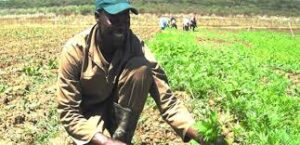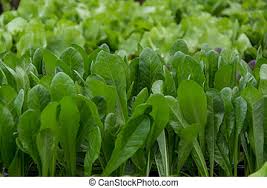

Chicory is a woody, perennial herbaceous plant and it is a member of the daisy family of plants called “Asteracease”. Chicory produces tubes or roots in the first year and develop a flower only in the second year.
Chicory root has a lot of health benefits on the human body, because of its ingredients. Chicory is an excellent source of potassium, Vitamin C and Vitamin A. In South Africa, Chicory is grown almost solely for the root. This is cut into cubes which are dried, roasted and milled and used for blending with coffee. Chicory is also consumed fresh, usually in salads or as a cooked potherb. The leftover parts of the root which are too small to be cubed are sold as stock feed.
Growing Chicory
Chicory prefers fertile, well-drained soil rich in organic malter. Loams, silt loams and clay loam soil often produce higher yields than lighter textured sandy soil as the latter has lower water retention ability and the crop suffers moisture stress sooner. Chicory is a cool – season plant. It grows fastest when conditions are warm and the monthly temperature does not exceed 25 grade Celsius. The plant can survive moderate but not severe frost.
Cultivars
There are 3 main types of Chicory gown for their leaves:
1. A bitter – tasting loose – leaved form is grown as a green winter vegetable, especially in southern Italy.
2. A narrow – leaved, witloof or Belgian form has a compact, elongated head (chicon) which is blanched for use in salads or cooked dishes.
3. A broad – leaved (usually red) form produces cabbage – like hearts. These are generally less bitter than the other forms and are eaten raw or cooked. These forms are often used as a winter salad crop.


Water Requirements
Chicory requires 75 to 90 mm of water per month for 160 000 to 180 000 plants per hectare, and then increasing 120 to 140 mm per month during the last 2 months before harvesting.
Planting
The best time to plant Chicory is in the spring season. Seed should be sown in a fine-textured seed bed, at a depth of not more than 6 cm in rows spaced 45 – 60 cm apart. When the plants reach the four-leaf stage they are thinned to stand 20 to 25cm apart in the row. The plant density is about 150 000 plants per hectare. Ideal planting time for sandy coastal regions (dry land) is from Feb. to May. Up country dry land plantings can be planted from March to middle September.
Irrigation
Chicory irrigation periods should not be longer than 4 hours at a time; 3 to 4 hours are ideal. Some more irrigation is needed for Chicory in drier areas.
NEED ANY HELP IN THIS AREA OR WITH A PROFESSIONAL AND BANKABLE BUSINESS PLAN CONTACT US NOW AT (27)84 583 3143 OR money@global.co.za FOR A PERSONAL AND PROFESSIONAL SERVICE

